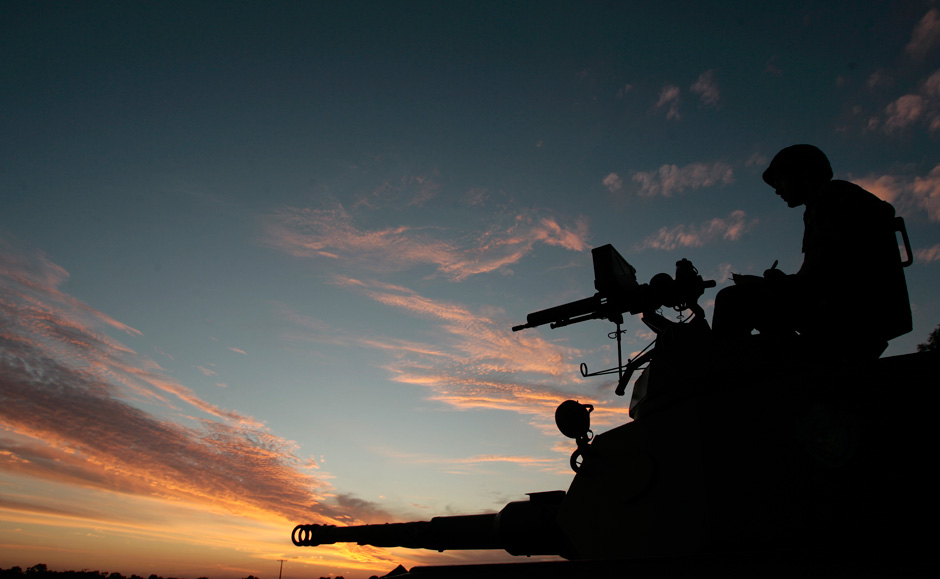
The United States has imposed military bases and deployed troops throughout Latin America. Its 4th fleet cruises surrounding seaways. Such doings, one assumes, relate to war, preparing for war, or occupying territory. Whatever the case, those in charge need to produce a rationale. As regards Latin America, the U.S. government usually claims its military forces are responding to terrorists or narco-traffickers, or even to insurgencies, without advertising the fact.
Justifications like these are plausible, at least until realization dawns as to more weighty reasons for intruding. However, it looks like U.S. military honchos long ago concocted a reason for a military presence in the region that is simply absurd. Onlookers are supposed to believe that a generous U.S. military wants to protect Latin Americans from threats having nothing to do with bad actors.
Take, for example, a recent gathering in the “hostile and challenging Amazon rainforest,” the subject of a press release from the U.S. Embassy in Brasília. In it, we learn that the U.S. Southern Command had organized a training session to enable “civilians and military personnel deployed in remote regions [to carry out out] Peace Operations and Humanitarian Assistance.” On hand would be 50 active-duty U.S. troops plus 31 members of the Montana Air National Guard. They would be joined by 1,550 Brazilian soldiers, 150 from Colombia, and 120 more from Peru.
The exercise, called either “AmazonLog 17” or “Operation America United,” took place November 6-13 in Tabatinga, a Brazilian town on the Amazon River, where the borders of Brazil, Colombia, and Peru converge. Military observers from 19 other countries were present, as was Brazilian Defense Minister Raul Jungmann, who was on his way to Washington “for three days of talks with Pentagon officials.”
Planners of the training exercise were anticipating that “an International Logistics Base” would be created there for the training of “Integrated Multinational Logistics Units.” That’s bureaucratese for “troops.”
To set U.S. troops to tasks billed as humanitarian is routine in Latin America—with the telling exception of hurricane-stressed Puerto Rico. In Peru, the United States has created multiple “Operational Centers for Regional Emergencies”—natural disasters, for example—in the Amazonian lowlands. Each one contains a heliport, a unit for storing humanitarian supplies, and facilities for planning and monitoring. Among Latin American nations, the amount of U.S. military assistance arriving in Peru is exceeded only by U S. aid to Colombia and Mexico.
For many years, under its “New Horizons” program, the Southern Command has installed bases or carried out military exercises throughout the region for the purpose of delivering humanitarian assistance, or preparing to do so. Host countries include Guatemala, Dominican Republic, Honduras, the Bahamas, Barbados, Dominica, Jamaica, Haiti, Panama, Argentina, Peru, and Chile.
The U.S. military advertises other beneficent projects. Scientific research relating to Antarctica will take place at a new U.S. base in Tierra del Fuego in Argentina. The U.S. Navy has long carried out research on tropical diseases at Iquitos in Peru.
The training exercise in Tabatinga in Brazil, however, represented “the first time such a large military exercise has been held in the Amazon,” according to Reuters. Glauber Braga, member of Brazil’s Chamber of Deputies, warned that U.S. involvement there “could represent possible loss of sovereignty and subordination of the Brazilian Army.” The Brazilian military leader of AmazonLog 17 dismissed such talk as “a senseless conspiracy theory raised by leftist parties.”
Interviewed by TeleSur, analyst Ana Esther Ceceña claimed the exercise was part of Brazilian and U.S. efforts “to finish off progressive governments” in Latin America: “The object of the U.S. Army and that too of Brazil, Peru, and Colombia is to create a prepared position and to leave a base available at any time for an intervention.”
“From there, the armies of Colombia, Peru, and Brazil would be able mount an offensive against those governments—especially those of Venezuela and Bolivia—that oppose [U. S.] hegemony, and against those countries possessing enormous natural resources.” Ceceña suggested also that “installations placed along national borders, [like the Tabatinga facility] would facilitate an intervention in Venezuelan territory and have it look like an action by a regional coalition, not like an invasion by the United States.” Venezuela’s border lies approximately 400 miles north of Tabatinga.
Testifying before the U.S. Congress on April 6, Admiral Kurt W. Kidd, the Southern Command head, pointed out that, “Venezuela faces significant instability in the coming year [and the] growing humanitarian crisis in Venezuela could eventually compel a regional response.”
Writers associated with the Latin American Center for Geopolitical Strategies (CELAG) looked at Tabatinga in the context of U.S. military activities in surrounding countries: “This U.S. presence in the region is related to a global struggle for political, economic, and scientific control of natural resources. And the Amazon region, taken as a whole, is prioritized due to its enormous reserves of hydrocarbons, water, minerals, and biodiversity.”
The Tabatinga episode is significant for shedding light on ways the U.S. government prepares for military action in Latin America. To wage war requires a justification that is acceptable at home. The same goes with preparing for war. As regards the Iraq and Vietnam Wars, U.S. justifications were lies, weapons of mass destruction, and attack by torpedo boats, respectively. In the present instance, humanitarian generosity is concocted as one reason for why the U.S. military is stirring about in South America. It’s a rationale both farcical and false.










